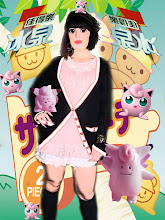Ways of seeing, J. Berger
Summery by Kelly Bruce/Cantrell.
Bergers essay on “ways of seeing” discusses how the reproduction of an original work of art mystifies the viewer of the piece and changes the context and meaning behind the artwork.
Through reproduction the entire meaning behind a piece of artwork can be lost entirely or changed to something utterly different. For example one could crop an area of a master painting to change it into a portrait rather than a landscape painting, words can be added to an abstracted piece of work to subtlety lead the viewer toward a hinted conclusion or thesis.
Does reproduction lessen the value of an original piece of art? Or does it in fact increase the value of the artwork? On one hand reproduction enables artwork to be brought to the attention of the masses, rather than the privileged minority it once served. But this also devalues the original in that it can now be mass produced and sold on at a cheaper price, It is no longer a rarity, or a one off piece that you need to go visit in a gallery, but a flat and shiny reproduced image that can be found just about anywhere.
So does this devalue the “original”? Now referred to as “the original” thanks to the commodity that is reproduction, or does it in fact make the original piece of work more sought after, as it has now become a rarity in itself?
The artwork is no longer defined by what it is or what it conveys but by it’s value as an original piece of artwork, and is often only declared “art” when it’s originality and heritage can be proven and certified.
The reproduced artwork’s meaning is lost the moment it is copied and transferred to a different setting, for the meaning and the message behind a piece of work is also seen in it’s surroundings, and in the brush strokes and intensity of the original.
A reproduced image now hung above hundreds of different mantelpieces, in different rooms around the world with different lighting and color schemes surrounding them, a varying assortment of furniture and other items to compliment or shadow the work can completely change it’s context and meaning because it is now “seen” differently, taking into account all these other factors.
Ways of seeing discusses how we “see” things before we can verbalize them, and how what we see around us and who is seeing us in return affects our sense of placement and belonging in the world. The same criteria can then be applied to the artwork, and how the use of the camera affects our perception of the photograph. We see the angles, and arrangement that the photographer, (or artist) wants us to see, we see what they saw, this originality and expression is lost however in the stigma that is reproduction.
The art of the past holds no authority like it once did, it has now become political, and all about the ethics of money, trade and value. Berger states that the “only” reason why art of the past has become so political is because a people or class has been cut off from it’s own past, a past in which that same class of people were able to situate themselves in history in a way that they cannot today.


No comments:
Post a Comment